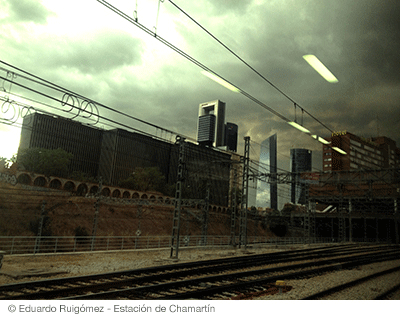Architecture
© Guillermo Labarca

 Berenice Abbot (pioneer of the School of Duesseldorf) says that Atget “had the ability to infill inhuman architectural photography with human experience”. This doesn´t seem to happen in the case of other members of the School of Dusseldorf: Becker, Gursky, Strutt, etc. Unless the “humanity” of this photographic trend is a very different one from the one of Atget, in different times, with different techniques, by people with life experiences that are hardly comparable. Perhaps humanism in modern photography is like the one we see in this time, that is to say, without a human presence. It is strange that these photographers show architecture conceived and made by persons, and naturally, for people, without them appearing in their images. Is this a characteristic of our times? Is architecture showing this lack of human presence or are the photographers the ones who prefer to eliminate people from their images?
Berenice Abbot (pioneer of the School of Duesseldorf) says that Atget “had the ability to infill inhuman architectural photography with human experience”. This doesn´t seem to happen in the case of other members of the School of Dusseldorf: Becker, Gursky, Strutt, etc. Unless the “humanity” of this photographic trend is a very different one from the one of Atget, in different times, with different techniques, by people with life experiences that are hardly comparable. Perhaps humanism in modern photography is like the one we see in this time, that is to say, without a human presence. It is strange that these photographers show architecture conceived and made by persons, and naturally, for people, without them appearing in their images. Is this a characteristic of our times? Is architecture showing this lack of human presence or are the photographers the ones who prefer to eliminate people from their images?
Architectural photography has been a central factor in the acquisition of value for architecture, beyond its utilitarian functions. The spreading of architectural ideas has been possible thanks to photography; without it (something which is unconceivable today) we would know very little of what is being done in faraway places, nor would we have significant images of buildings we cannot access physically. There is a symbiosis between these two art forms. This symbiosis also allows us to appreciate the changes that are taking place in cities and the meaning and changing symbolic value of certain buildings. It makes us see angles, details, corners that would go unnoticed at first sight, through framing, focusing and blurring, selecting objects inside the image, interventions and so many other photographical resources. The history of this symbiosis reflects both the symbolical role of architecture and its evolution as the ideas about the place we inhabit that predominate in each epoch. Atget photographed the intimacy of neighborhoods; that which was closest to the people who circulated there. Nowadays architectural photographers emphasize monumentality, an urbanism that imposes itself on us, enormous industrial warehouses and facilities, overcrowding in enormous buildings; they almost seem like a desperate cry to escape from this concrete that is upon us and that diminishes us so much that we are reduced to nothingness.

